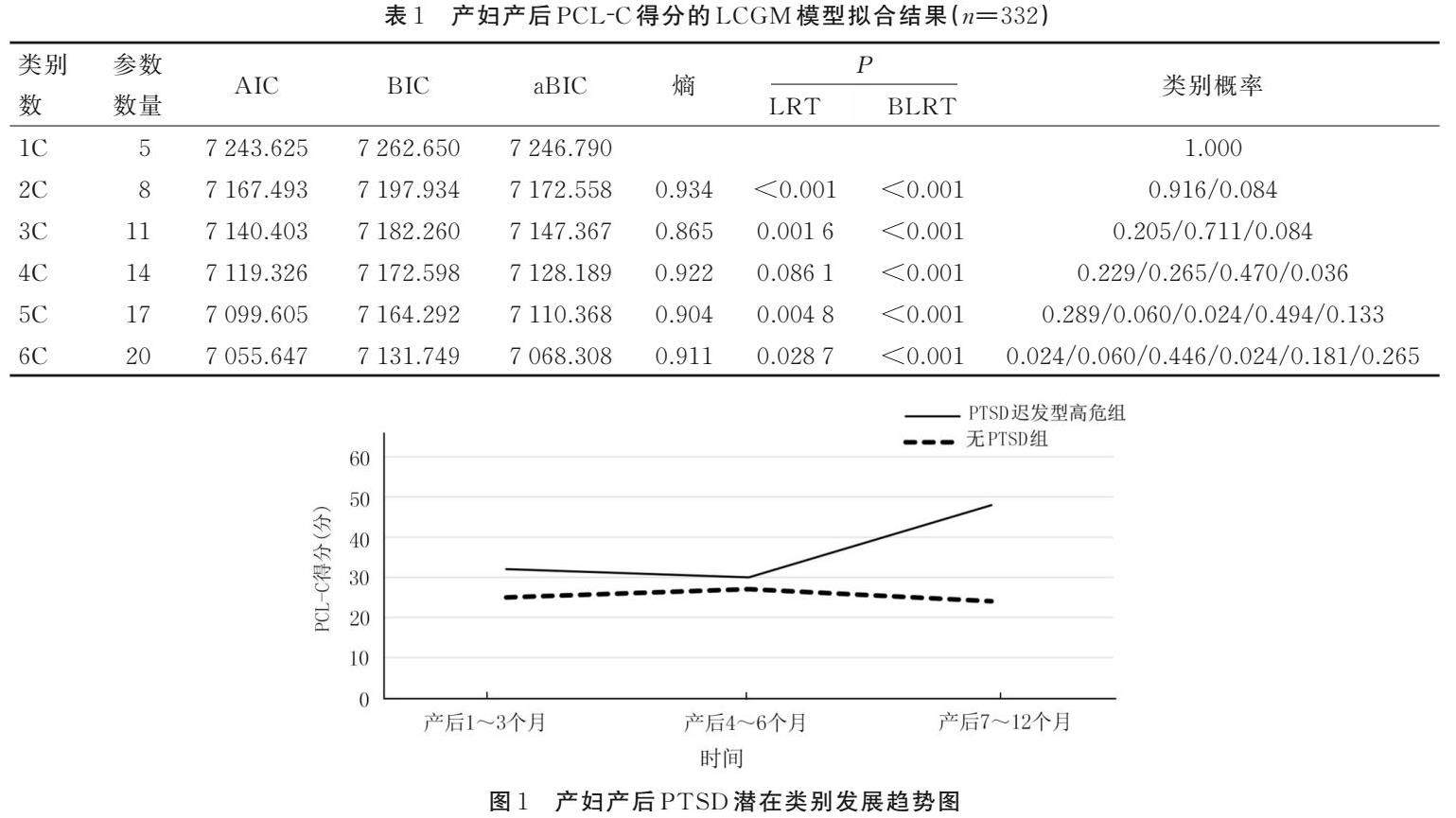产后创伤后应激障碍轨迹及影响因素的纵向研究


打开文本图片集
Abstract Objective:To explore the development trajectory of post-traumatic stress disorder(PTSD) in puerpera within one year after delivery and to analyze the predictive effect of resilience and other factors on trajectory classes.Methods:From October 2019 to April 2021,a total of 332 cases of parturient women who met the sampling standards in 8 community health service stations in Xi'an were selected as the research subjects.The PTSD levels were investigated in three periods after delivery:1⁃3 months,4⁃6 months,and 7⁃12 months.Trajectory classes were identified using a latent class growth model(LCGM).The logistic regression analysis was used to identify predictors of trajectory classes.Results:This study identified two distinct postpartum PTSD trajectories:the high⁃risk group with delayed onset of PTSD(8.4%) and the non⁃PTSD group(91.6%).Logistic regression analysis showed that unemployed,low⁃income,non⁃first⁃time childbirth,and low⁃strength puerpera had a high probability of belonging to the high⁃risk group of late⁃onset post⁃traumatic stress disorder(P<0.05).Conclusions:The development of PTSD in puerpera within 1 year after delivery was heterogeneous,with two different development trajectories.Most puerpera could maintain the stability of cognitive behavior and social function.Occupation,family income per capita, first childbirth or not, and strength were predictors of postpartum PTSD trajectory.
Keywords puerpera; posttraumatic stress disorder; resilience; longitudinal study; nursing
摘要 目的:探讨产妇产后1年内创伤后应激障碍(PTSD)的变化轨迹,分析心理弹性等因素对轨迹类别的预测作用。(剩余10758字)